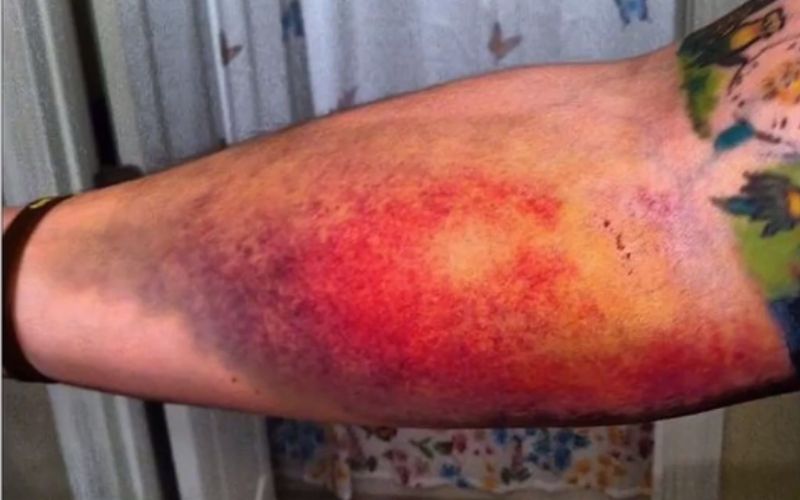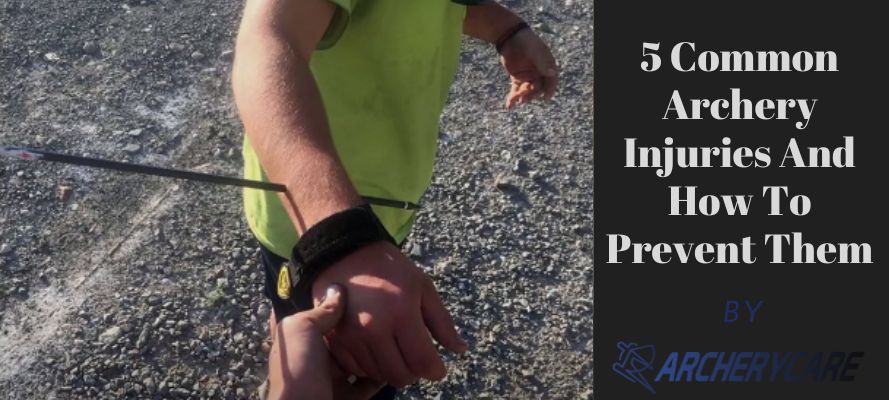Archery, unlike hockey and boxing, is regarded as one of the safest sports ever invented. All we see is that the sports only demand one hand to hold the bow and the other to hold the arrow. As a result, we overlook the injuries that it can cause, which are mostly internal.
Archery injuries mostly affect the muscles of the arms, fingers, shoulders, neck, and chest. Even if the activities appear to be simple, they involve a large number of muscles that are constantly in use, and a lack of proper posture will result in more serious injuries than we might imagine.
However, if the sport is followed by a few measures such as rest and the use of protective equipment, the chance of injury is considerably reduced.
Nevertheless, let's look at the types of injuries that archery might cause and how to avoid them as swiftly as possible.
Table of Contents
5 Archery Injuries and Their Prevention
We'll go over five archery injuries that have serious consequences for your muscles and should be avoided at all costs. Furthermore, the sooner you begin the preventative procedure, the better off you will be since you may entirely regain your fitness.
1. Rotator Cuff
If raising your arm hurts a lot and you hear joints popping while moving, you most likely have rotator cuff troubles. The rotator cuffs are a collection of muscles and tendons that cover and support the shoulder joints.
Your rotator cuff is in control when you're continually drawing your preferred bow, allowing you to keep your bow stable every time you shoot.
However, these cuffs have a limit, and any constant pressure on a certain area of the body is not healthy, and an injury is almost guaranteed.
As a result, you will have shoulder discomfort, also known as archery shoulder pain.
Prevention:
You may begin by minimizing your bow's weight. Even if you just want to play with a certain bow since it's your favorite, you'll have no choice but to choose a new favorite bow that's lighter. It's also a good idea to give your rotator cuffs a break after each round.
Furthermore, you might consider learning how to aim a bow precisely. Holding it in an unfavorable position might cause problems in other parts of the body as well.
2. String Slap
If you're new to the sport, you'll get string slapped shortly. However, if you've been doing it for a while, you should have already learned your lesson. A string slap occurs when you hold your bow too tightly for a longer length of time, and your muscles just can't hold it any longer.
Later, cause your bow to slightly lean when launching the arrow. As a result, your forearms become tangled in the activity and the victim.

Prevention:
If you're seeking bow string slap injury treatment, the first step is to see a doctor. On the other side, there are several things you can do to make sure it doesn't happen again.
You should relax your grip on the bow. It is preferable to have a natural tight grasp on the bow rather than exert all of your energy on holding it. It will prevent intense pressure from being applied to the muscles.
As a result, your bow will not be tilted by your muscles and avoiding bow accidents. Furthermore, maintaining a straight back and a broader posture might help you avoid it.
3. Tendonitis
You may develop archery tendonitis if you experience slight swelling and soreness in your elbows, shoulders, as well as wrists. It is one of the common injuries in archery that causes a concentrated dull aching while moving joints.
Typically, once you've achieved your anchor position, you'll start to experience discomfort in the bow's associated muscles.
Prevention:
The tendonitis normally heals in four weeks or less. However, you may use an ice pack to speed up the healing process. Nevertheless, if you are experiencing tendonitis discomfort, you should begin working out. The first measure you should take is to do exercises that strengthen your shoulder muscles.
4. Blisters
While the fluid fills a gap between layers of skin, a blister is one of the worst conditions you might encounter. It is mainly produced by friction on the bowstring in archery, and you have undoubtedly experienced it if not in archery than in wearing tight shoes.
When the archer's finger comes in touch with the bowstring for an extended time, friction and heat are created, and thus a bowstring injury.
Prevention:
Using any sort of lubrication on your hand will make your fingers more slippery and thus produce less friction and heat. Also, make sure your elbow position is not too high when holding the arrow.
5. Sharp Archery Essentials
No, it's not another bow injury that puts strain on your muscles; instead, it's an injury suffered when handling archery essentials. One of the key risks you should be aware of is archery supplies such as arrows and broadhead arrows. You'll need to grab a hold of them to move them about, and if you're not cautious, you'll end up with skin wounds and infections.
Prevention:
This one has a really easy preventative method. Aside from being cautious, you can protect your sharp archery supplies by wrapping them in coverings that make them safe to transport. Furthermore, there are tutorials on the internet that teach how to correctly manage sharp archery necessities, which you should watch.
What Are Some Protective Devices You Can Use In Archery?
Similar to how riding a motorbike is dangerous and requires protective gear, there are gears available for archery that will protect you from bow injuries and other hazards.
Arm Guard
Remember slap string, when the bow is tilted, and your arm is the arrow's victim? On the other hand, wearing an armed guard will keep you safe because the arrow will not be able to pierce it.
Chestguard
Wearing a chestguard prevents your chest from interfering with the bowstring, allowing you to wear loose-fitting clothing that was not recommended in the first place.
Quiver
A quiver is where all your arrows are stored so that you can transport them everywhere without getting hurt or worrying about their sharp edges.
Finger Tab
Since the friction and heat created by the bowstring put the archer's fingertips at risk, a finger tab is a leather protective gear designed to keep the archer's fingers safe when shooting.
Archery Gloves
Archery injuries hand gloves are worn on both hands so that one can protect the fingers of the archer and the other can protect the knuckle.
Conclusion
To conclude, archery is an enjoyable activity, and these injuries are unlikely to deter any archery enthusiast. However, anybody who participates should be aware of the types of archery injuries that might occur and how to avoid them.
The very least you can do to protect yourself from injury is to learn the appropriate posture and keep your bow's weight low. Furthermore, holding the bow in the upright technique is important.
Nonetheless, nothing is more effective at keeping you safe than safety equipment. We strongly advise you to wear at least arm protection and a chest protector.
Links of Related Posts That You May Read:

